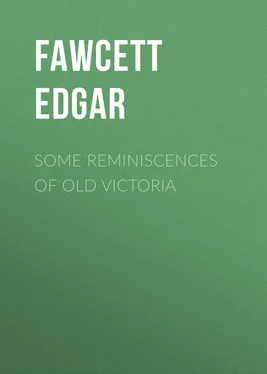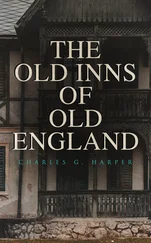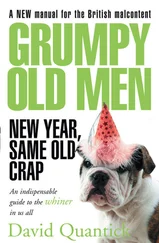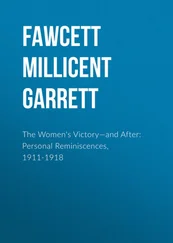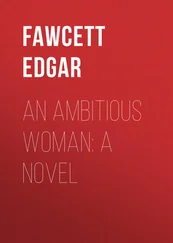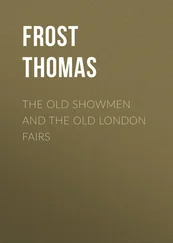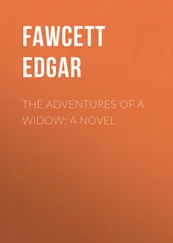Edgar Fawcett - Some Reminiscences of old Victoria
Здесь есть возможность читать онлайн «Edgar Fawcett - Some Reminiscences of old Victoria» — ознакомительный отрывок электронной книги совершенно бесплатно, а после прочтения отрывка купить полную версию. В некоторых случаях можно слушать аудио, скачать через торрент в формате fb2 и присутствует краткое содержание. Жанр: foreign_antique, foreign_prose, на английском языке. Описание произведения, (предисловие) а так же отзывы посетителей доступны на портале библиотеки ЛибКат.
- Название:Some Reminiscences of old Victoria
- Автор:
- Жанр:
- Год:неизвестен
- ISBN:нет данных
- Рейтинг книги:3 / 5. Голосов: 1
-
Избранное:Добавить в избранное
- Отзывы:
-
Ваша оценка:
- 60
- 1
- 2
- 3
- 4
- 5
Some Reminiscences of old Victoria: краткое содержание, описание и аннотация
Предлагаем к чтению аннотацию, описание, краткое содержание или предисловие (зависит от того, что написал сам автор книги «Some Reminiscences of old Victoria»). Если вы не нашли необходимую информацию о книге — напишите в комментариях, мы постараемся отыскать её.
Some Reminiscences of old Victoria — читать онлайн ознакомительный отрывок
Ниже представлен текст книги, разбитый по страницам. Система сохранения места последней прочитанной страницы, позволяет с удобством читать онлайн бесплатно книгу «Some Reminiscences of old Victoria», без необходимости каждый раз заново искать на чём Вы остановились. Поставьте закладку, и сможете в любой момент перейти на страницу, на которой закончили чтение.
Интервал:
Закладка:
Crossing the street, we come to the Brown Jug, the same to-day as then, but kept by Tommy Golden, a well-known character then. In the front is a hydrant with a water-cart getting its load for distribution through the city. The water was conveyed in wooden pipes from Spring Ridge and sold by the bucket, which may be seen on the shafts of the cart. Forty of these buckets represented one dollar. Opposite the Brown Jug and across the street is a vacant lot, now occupied by the Bank of Commerce. The opposite corner to this is also vacant, but soon after was built the present brick building by J. J. Southgate and Captain Lascelles, R.N., of the gunboat Boxer .
This view represents the south side of Fort Street, from the Brown Jug corner east. The wooden building next is a photograph gallery owned by Fred. Dally. He with R. Maynard were the only ones in the business at that time, I think. Next is Dr. Powell’s residence and surgery; the house is not visible, being set back from the street. Alexander McLean’s "Scotch House" clothing store is plainly seen. Amongst those standing in front are Mr. McLean, the proprietor; James Fell, who later on was mayor; William McNiffe, of the "Grotto," and Thomas Harris, already mentioned, who is on horseback. Above McLean’s is Murray’s Scotch bakery, where I have gone often for bread and shortcake. Four doors above is A. & W. Wilson’s, plumbers and gas fitters, and Tom Wilson may be seen standing on the sidewalk – he is the only one of the brothers not here to-day. Next is Birmingham House, Kent & Evans, Charles Kent, the city treasurer, being senior partner. Across Broad Street is John Weiler’s upholstery store. Then comes James Fell & Co., grocers; then M. R. Smith & Co., bakers. Above Douglas Street there were few or no stores. On the upper corner was D. Babbington Ring, an English barrister, who always walked about with a dog-whip in hand and several dogs after him.
Above the corner lived Dr. Baillie, a cousin of Sir M. B. Begbie, who was afterwards drowned in South America. We come next to the Congregational Church, which lived a short life as a church, for Dr. Ash bought it and turned it into a residence, taking down the steeple, which may now be seen in the photo. It passed into the hands of Dr. Meredith Jones after Dr. Ash’s death. Above this I remember little as to individual houses, but know that they were very scattered.
This view represents Yates Street, from the corner of Wharf, south side. I have briefly mentioned Sutro’s tobacco warehouse, and this is the Yates Street side of it. There was a large figure of a Turk with a turban and large pipe as a business sign on the corner of the street. Next to Sutro’s is Joseph Boscowitz’s, the pioneer dealer in furs, and as may be seen he is not now far from his former place of business. Next door is the firm of Wolf & Morris, that I cannot now remember. The saloon next door was kept by Burns & Dwyer – the latter, I think, still lives on Pandora Street. Next door but one is William Dalby’s saddlery shop, and he is with us to-day. Guy Huston, the gunsmith, occupied the next store. He was the principal gunsmith in the city, and his two daughters, both married to prominent men of business, are still residents of the city. Alfred Fellows, iron and hardware merchant, who comes next, was the founder of the business of E. G. Prior & Company. The Fashion Hotel was kept by John C. Keenan, an American, and was a first-class gambling house and dancing hall. High play was the order, and many a Cariboo miner in the winter months threw away his easily-got gold by the hundreds here. Keenan was a prominent fire chief in those days of volunteer firemen. Wells Fargo’s Express comes next, presided over by Colonel Pendergast and Major Gillingham. On the arrival of a San Francisco steamer there was a rush to Wells Fargo’s for letters, and soon after the receipt of the express bags at the office the place would be full to the doors. I might state that it was the custom then for all mail steamers to fire a gun on arrival, either at the mouth of the harbor or inside the harbor itself, so that we gathered at the post-office and express office soon after. Either Colonel Pendergast or Major Gillingham then mounted a chair and called off the addresses, and the letters were either flipped or passed on to their owners by those nearest the caller, for it seemed as if everybody knew each other. Twenty-five cents was the postage paid in advance. Next door is the telegraph office and Barnard’s express. Our old friend, Robert McMicking, had charge of the telegraph, and maybe the express also, but I have forgotten. Langley & Co., the well-known druggists, I can remember ever since I can remember Victoria. The building is pretty much now as it was then, only larger. Those connected with its early history have passed away, excepting it may be Mr. Pimbury; Mr. A. J. Langley, who died in late years; Mr. Jones, who went into business in Cariboo and died there, and Mr. Pimbury, who went to Nanaimo and into business for himself. Between Langley’s and the corner of Langley Street, was Jay & Bales’ seed store. Both these early pioneers have gone to their rest, although the business is still carried on on Broad Street by Mr. Savory.
On the corner is the Fardon building, which in 1859 was occupied by Hibben & Carswell, the beginning of the firm of T. N. Hibben & Co. Mr. Hibben, Mr. Carswell and Mr. Kammerer, the principals, have all gone to their rest, but the firm still lives and nourishes. An incident connected with the junior partner might here be recalled. One summer day Mr. Carswell, if I remember right, was one of a picnic party, who got lost in the woods near Muir’s farm 30 miles from town, and the balance of the party returning to town without him, a search party was organized and a reward offered by Mr. Hibben for his partner’s return. They left next morning, and after a long and strict search, as the party was returning to town to report their want of success, whom should they see ahead of them but the lost James Carswell, trudging along on the highroad to town. He was told that they were a search party sent out to look for him, and that they were glad they found him. "Found me!" said Mr. Carswell; "why, I am on my way home!" and they then proceeded to town together. When the party reached home Mr. Carswell was told that Mr. Hibben had sent the searchers, and had offered a reward for his finding. This Mr. Carswell objected to pay, protesting that they had not found him, but that he had found himself, and was on his way home when they met him. It caused a great deal of merriment, and was a standing joke for some time. An incident like this would be the talk of the town in those good old days, and many visits would be paid to Campbell’s corner, kept by John Molowanski, a Russian, to hear if any news had been received of the lost Mr. Carswell.
The first time I remember going to Hibben & Carswell’s was in 1860, when I went to exchange a prize book I had won at school, and which was imperfectly bound, having several pages out of place. It was then I first saw Mr. Kammerer, and he informed me afterwards that he had just then been promoted from porter to assist in the office, and from this dated his rise in the firm to a partnership. Upstairs in this building was the Masonic hall and Fardon’s photographic studio. Across the street are Moore & Co., druggists, an old established business of 1859 or ’60, the present proprietor’s father being the founder of the business. The Bank of British North America next door is, so far as I can remember, the pioneer bank in Victoria. I assisted in the assaying department for a short time in 1867. The next building is the famed Campbell’s corner (the Adelphi). Who among our pioneers does not remember the genial face of Frank Campbell, his corner and all the associations connected with it? When was Frank not at the corner? I should say only when he was eating and sleeping. Morning, noon and until 11 o’clock at night he was on duty. All the births, deaths and marriages were recorded on his intelligence board. All the news of the day, events from abroad and at home – all were recorded by Frank. There never lived a better-tempered or so good-hearted a fellow. Before going home after a lodge or a political meeting the last thing was to call at the "corner" for the latest bit of news. It was the meeting-place of many who made it their headquarters. Evening after evening for years Frank had his audience. Everyone knew him and to know him was to like him – " requiescat in pace ." Across Government Street and next to Zelner’s drug store I see the sign of J. S. Drummond, stoves and tinware. He was a grand master of Oddfellows, a prominent Mason, a fire chief, an officer of militia, and served a term in the city council. Beyond Drummond’s I cannot make out any more signs or buildings, even with the magnifying glass, and I have looked long and hard until my eyes ache. A deal might be written of many more of the old streets and their inhabitants, but it might be undertaken by someone else with a better memory, and who was older and took a prominent part in affairs of that day.
Читать дальшеИнтервал:
Закладка:
Похожие книги на «Some Reminiscences of old Victoria»
Представляем Вашему вниманию похожие книги на «Some Reminiscences of old Victoria» списком для выбора. Мы отобрали схожую по названию и смыслу литературу в надежде предоставить читателям больше вариантов отыскать новые, интересные, ещё непрочитанные произведения.
Обсуждение, отзывы о книге «Some Reminiscences of old Victoria» и просто собственные мнения читателей. Оставьте ваши комментарии, напишите, что Вы думаете о произведении, его смысле или главных героях. Укажите что конкретно понравилось, а что нет, и почему Вы так считаете.
